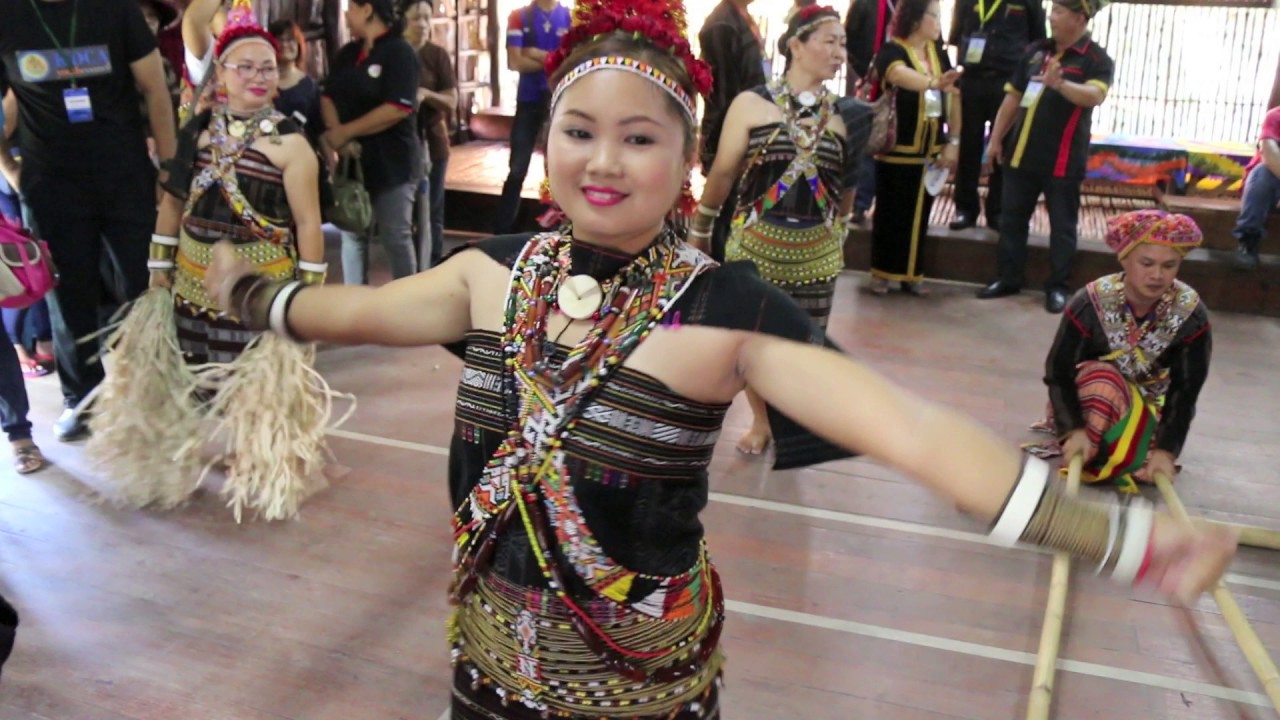ARTS AND CULTURE INFORMATION GATEWAY
Immerse yourself in the colorful world of art and culture! From traditional heritage to contemporary works, discover uniqueness that reflects the nation's identity and identity
TARIAN MANARADAN
Picture
1
Video
No record
Today's Visitor
20
Number of Visitors
1032
Introduction and history
The Manaradan dance is a traditional performance of the Rungus ethnic community, predominantly found in the Kudat, Paitan, Kota Marudu, and Matunggong districts. This dance carries significant cultural value and is a vital part of the Rungus heritage that requires preservation. It is performed exclusively during Mogunum or other special celebrations, particularly to welcome distinguished figures, such as the Huguan Siou (Paramount Leader of the Kadazan-Dusun ethnic group) or leaders of the Momogun community. According to Rungus customs and taboos, the Manaradan dance must not be performed without a specific purpose, as doing so is believed to bring misfortune to the residents of the longhouse.
Originally, the Manaradan dance was a form of worship dedicated to Si Rusod, a deity revered by the Rungus community as a protector and guardian of humanity. Through this dance, the Rungus people expressed their gratitude for the blessings and protection bestowed by Si Rusod. Over time, however, the dance’s religious significance has diminished, and it is no longer performed as part of spiritual rituals. Today, the Manaradan dance serves primarily as a cultural performance, featured at welcoming ceremonies, cultural festivals, and competitions. It has become a symbol of the Rungus' cultural heritage and contributes to preserving their ethnic identity in modern society.
The Manaradan dancers wear elaborate attire embellished with intricate beadwork. The main ensemble features handwoven fabric called Banat Ngolitan, which covers the dancer’s body, complemented by a skirt known as Tapi Rinugading and a shoulder cloth referred to as Longon. Female dancers also wear a headpiece called Titimbok, an ornament placed at the back of the hair, while the Sisingal, a beaded accessory, adorns the hairline.
Additional adornments include a beaded necklace called Inggot, paired with a central decorative piece called Sulau, crafted from seashells. Shoulder embellishments consist of flat bead sashes such as Pinakol, Sandang, and Sopilang, worn diagonally across the shoulders. On their wrists, dancers wear Saring bracelets, featuring wide white bangles paired with slim copper ones. At the hips, a finely beaded accessory called Orot fully covers the hips and waist, while for their legs, the dancers wear Bongkol, beadwork anklets.
Typically, this dance is accompanied by traditional Rungus gongs comprising seven types: Koritikon (small gong), Sandangau (small gong), Pompom, Soludon, Tongikon (Tavag), Hungkodonan (Tavag), and Bimbingan (Tavag). Occasionally, the Manaradan dance is performed without musical instruments. Instead, the accompanying sound is produced solely from the stomping or striking of bamboo.
Traditionally, this dance incorporates two key elements: Mongigol Sumundai and Magunatip. The Mongigol Sumundai element represents the basic dance movements, while the Magunatip element uses bamboo during the female dancer’s performance. Consequently, the dance is performed exclusively by women, with the men’s role limited to a single performer responsible for striking or stomping the bamboo in rhythm. One of the prominent movements in this performance is called Mamanbazangan, where the dancer gracefully extends both arms and raises them to waist level. This movement highlights the elegance and harmony of the dancer’s body, bringing the traditional dance to life.
-
Reference Source
Low Kok On. (2013). Collecting and contextualising Sundait (Riddles) among the Rungus people of Sabah. Pertanika Journal of Social Science and Humanities, 12(3), 897–922. http://www.pertanika.upm.edu.my/
Mahfar, S. F. & Jusilin, H. (2017). Reka corak dan simbolisme motif pinakol dalam pakaian masyarakat Rungus di Sabah. Jurnal Gendang Alam, 7, 1–17.
Pangayan, V. B. (2020). Tarian Mongigol-Sumundai Momogun Rungus Di Sabah: Analisis Konsep Persembahan dan Ragam Gerak. Jurnal Gendang Alam. https://doi.org/10.51200/ga.vi.2840
Yoon, P. L., & Jusilin, H. (2018). Ciri estetika dalam reka bentuk dan motif pakaian tradisional golongan perempuan etnik Rungus di Kudat. Jurnal Gendang Alam, 8, 65.
Location
State JKKN Contact Information
Puan Nurshahrinna Syahrial
Cultural Officer
Jabatan Kebudayaan dan Kesenian Negara, Sabah
Kompleks JKKN Sabah,
Jalan Tasik off KM4 Jalan Penampang,
88200 Kota Kinabalu
SABAH
088-205070
Use the form below to contact the Informant/Figure/Editor/Researcher directly. We will respond to your inquiry as soon as possible!






